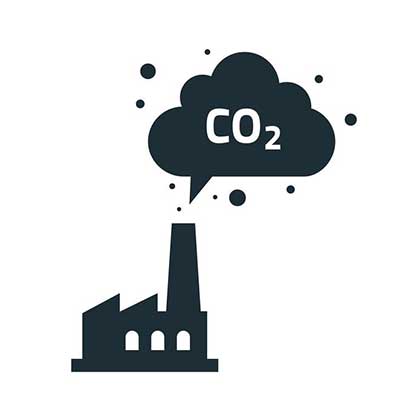Relevance: GS-3: Science and Technology- developments and their applications and effects in everyday life,Conservation, Environmental pollution and degradation, Environmental impact assessment.
Key Phrases: Carbon Sequestration, Carbon Dioxide, Electrochemical sequestration, Electrochemistry, Hydroxide Ions, Biological carbon sequestration, Graphene, Accelerating CCS technologies, Net zero emission, IPCC Report.
Context:
- Prof Bryan McCloskey of Lawrence Berkeley National Laboratory, California, has come up with a potentially cheaper approach to carbon sequestration. His method uses electrochemistry to capture carbon dioxide.
- It is a good method of sucking out carbon from atmospheric carbon dioxide i.e. direct air capture, which is being tried in some places.
Electrochemical Sequestration:
- Electrochemical method uses electrochemistry to capture carbon dioxide. Electrochemistry broadly involves atoms giving or receiving electrons. This science is the basis of all batteries and fuel cells. This process gets carbon dioxide to react with hydroxide ions to form bicarbonates. It then uses electrochemical methods to separate carbon dioxide and the hydroxide ions, so that the gas can be put away and the hydroxide reused.
- In the electrochemical cell, two reactions occur at each of its electrodes. At one electrode, bicarbonate is oxidised to form a pressurised stream of carbon dioxide, which can be sequestered. At the other electrode, hydrogen gas is generated, which consumes protons to regenerate the alkaline solution. The hydrogen production is certainly a bonus of our alkaline regeneration scheme. Thus, the process produces a stream of concentrated carbon dioxide and another stream of hydrogen.
What is Carbon Sequestration?
- Carbon dioxide is the most commonly produced greenhouse gas. Carbon sequestration is the process of capturing and storing atmospheric carbon dioxide. It is a method of reducing the amount of carbon dioxide in the atmosphere with the goal of reducing global climate change.
Types of Carbon Sequestration:
- Biological
- Biological carbon sequestration is natural storage of carbon dioxide. This includes storage in plants (naturally done through photosynthesis), trees, soil, and ocean carbon sequestration. The roots of plants and trees are excellent at carbon sequestration, storing vast amounts of carbon in there as well as in the leafy growth.
- Currently, our oceans’ carbon sequestration accounts for around one-quarter of CO2 emitted annually by industry. The ocean can absorb more carbon in colder climates, which makes the rise in temperatures in Polar Regions more alarming.
- Geological
- Geological carbon sequestration takes place when CO2 is injected into porous geological rock formations. This type of carbon sequestration is currently being implemented in industrial production. Industries, such as steel, energy, and natural gas production, send carbon dioxide runoff deep into the earth, trapping it, so it doesn’t spill into the atmosphere.
- But, Geologic sequestration through carbon capture and storage (CCS) – is still a largely unproven approach. In particular, geologic reservoirs for CCS are finite, and the total viable long-term storage potential is unclear. This has led a number of commentators to warn against making premature assumptions about the reliability of “negative emission technologies”, and to argue for developing emission reduction targets separate from considerations about sequestration or negative emissions.
- Technological
- Technological carbon sequestration is an attempt to create a useful by-product from excess carbon dioxide.
- One group of scientists is perfecting a method that changes CO2 into methane and water. Methane can then be used as fuel for electricity or to power vehicles.
- Scientists have explored the possibility of creating a raw material from CO2 and have created a substance called Graphene. Graphene’s use is still limited, but it is already used in devices such as smartphone screens.
- Other technological carbon sequestration methods are still in a nascent stage. Processes such as direct air capture can capture CO2 emissions in the atmosphere but is currently an uneconomical choice to use on a larger scale.
India and Carbon Sequestration:
- National Programme on CO2 Storage Research by Department of Science and Technology
- India is part of the accelerating CCS technologies (ACT) initiative.
- ACT is an international initiative of 16 countries to facilitate the emergence of CCUS via transnational funding of projects aimed at accelerating and maturing CCUS technology through targeted innovation and research activities.
- ‘Industry Charter’ for near-zero emissions by 2050 was agreed to by six Indian companies that will explore different decarbonisation measures including carbon sequestration.
Way Forward:
- Carbon Sequestration is a viable option for global leaders to achieve Net zero-emission by 2050 as asserted in the IPCC Report, to protect the planet from rising temperature greater than 2°C.
- The need is serious global cooperation and coordination for feasible technology development and affordable access to all, based on principles of Equity and Climate Justice.
Source: The Hindu BL
Mains Question:
Q. What do you understand by Carbon Sequestration? Discuss different types of Carbon Sequestration methods.







